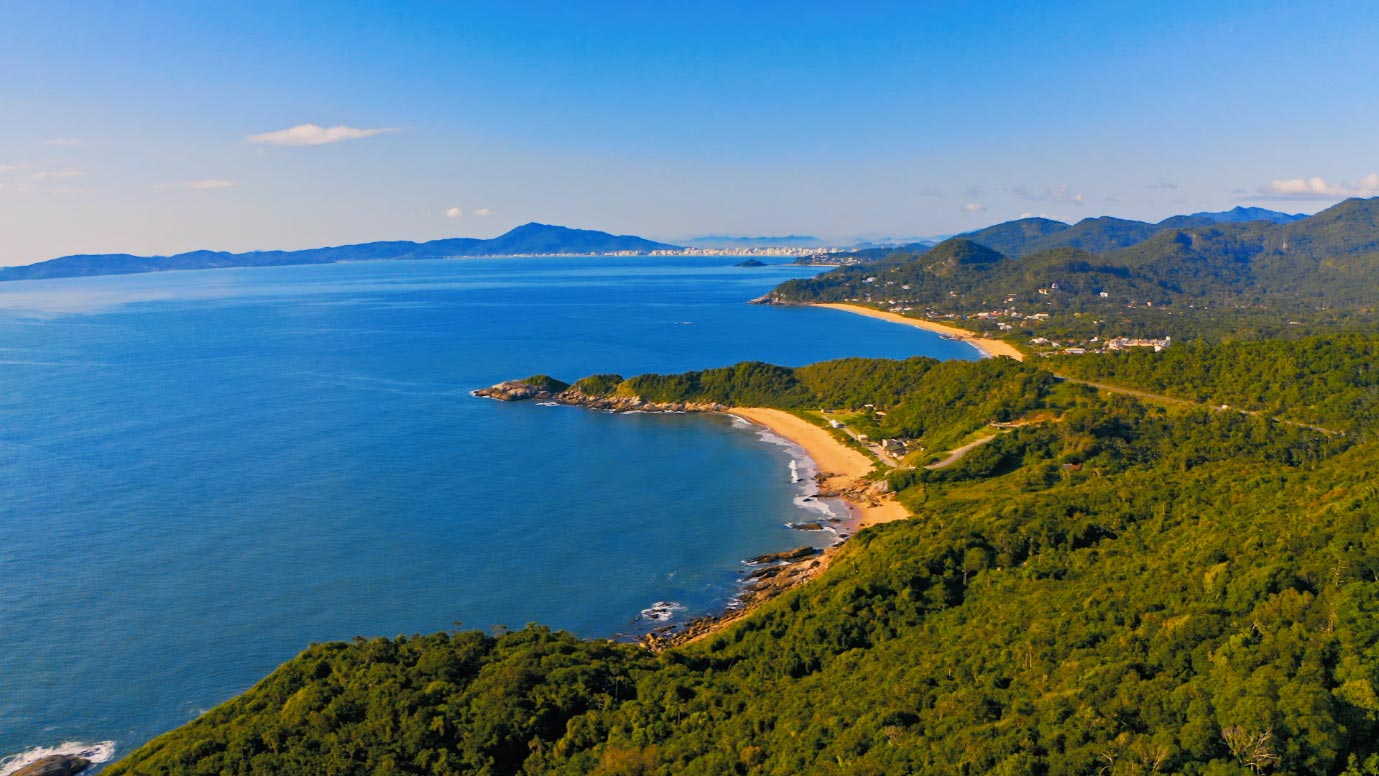
The coastal region is a dynamic and captivating environment that holds a wealth of natural wonders and diverse ecosystems. From stunning beaches to vibrant marine life, the coastal area is a treasure trove of beauty and biodiversity. In this article, we'll delve into 11 fascinating facts about the coastal region, shedding light on its geological significance, ecological importance, and the myriad of ways it impacts our lives. Whether you're a nature enthusiast, a science buff, or simply curious about the world around you, these facts will offer a deeper understanding of the coastal region and its profound influence on both the environment and human society. So, let's embark on a journey to uncover the remarkable secrets of the coastal region and gain a newfound appreciation for this captivating natural wonder.
Key Takeaways:
- The coastal region is a vibrant and diverse ecosystem, home to a wide array of wildlife and offering recreational opportunities. It faces threats from erosion, climate change, and development, requiring integrated management for its preservation.
- The coastal region holds immense cultural and ecological significance, inspiring art and literature while supporting fisheries and serving as a buffer against storms. Its careful stewardship is essential for the well-being of both the environment and coastal communities.
The Coastal Region is a Dynamic Ecosystem
The coastal region is a vibrant and diverse ecosystem that encompasses the area where land meets the sea. This unique environment is shaped by a variety of factors, including the interaction of land and water, tidal movements, and the influence of marine and terrestrial ecosystems. The coastal region is not only ecologically significant but also holds immense economic and cultural value for communities around the world.
It Supports a Wide Array of Wildlife
The coastal region is home to a rich tapestry of wildlife, including numerous species of birds, mammals, fish, and invertebrates. From majestic seabirds soaring above the shoreline to colorful marine life thriving in the shallow waters, the coastal region teems with biodiversity. This diverse array of wildlife relies on the unique habitats provided by the coastal environment for nesting, breeding, and foraging.
It is Vulnerable to Erosion and Flooding
The coastal region faces ongoing challenges from erosion and flooding, which are exacerbated by factors such as rising sea levels and human activities. Coastal erosion can lead to the loss of valuable land, infrastructure, and habitats, while flooding poses significant risks to coastal communities and ecosystems. These environmental threats demand careful management and conservation efforts to mitigate their impact on the coastal region.
It Serves as a Buffer Against Storms
The coastal region acts as a natural buffer against the full force of storms and hurricanes, helping to protect inland areas from the destructive power of extreme weather events. Coastal wetlands, dunes, and mangrove forests serve as vital protective barriers, absorbing and dissipating the energy of incoming waves and winds. This crucial function highlights the importance of preserving and restoring coastal ecosystems for the resilience of surrounding landscapes.
It Offers Recreational Opportunities
The coastal region provides a picturesque backdrop for a wide range of recreational activities, including swimming, surfing, beachcombing, and wildlife watching. Its scenic beauty and diverse landscapes attract visitors seeking relaxation and adventure, contributing to the tourism industry and local economies. The coastal region's allure as a recreational destination underscores its significance as a natural and cultural asset.
It Supports Fisheries and Aquaculture
Coastal waters are essential for supporting thriving fisheries and aquaculture operations, providing a vital source of sustenance and livelihoods for coastal communities. The nutrient-rich waters of the coastal region sustain diverse fish populations, while aquaculture activities contribute to the production of seafood for global consumption. Sustainable management of coastal fisheries and aquaculture is crucial for preserving this valuable food resource.
It Faces Pressures from Development
The coastal region is increasingly subject to development pressures driven by urbanization, industrial activities, and infrastructure projects. Rapid coastal development can lead to habitat loss, pollution, and disruptions to natural processes, posing significant challenges to the ecological balance of the region. Balancing development with conservation is essential for safeguarding the integrity and resilience of the coastal environment.
It is a Source of Inspiration for Art and Literature
The coastal region has long served as a muse for artists, writers, and creatives, inspiring countless works of art, literature, and music. Its ever-changing landscapes, dramatic seascapes, and unique biodiversity have captivated the imagination of storytellers and artists throughout history, leaving an indelible mark on the cultural heritage of coastal communities and beyond.
It Faces Climate Change Threats
The coastal region is particularly vulnerable to the impacts of climate change, including sea level rise, ocean acidification, and extreme weather events. These environmental shifts pose significant challenges to the stability and sustainability of coastal ecosystems, as well as the livelihoods of communities reliant on coastal resources. Adaptation and mitigation measures are essential for addressing the multifaceted threats posed by climate change in the coastal region.
It Holds Cultural Significance
The coastal region is deeply intertwined with the cultural identities of many societies, serving as a source of traditions, folklore, and livelihood practices. Coastal communities have developed unique cultural expressions, culinary traditions, and artisanal crafts that reflect their close connection to the sea and coastal landscapes. Preserving and celebrating this cultural heritage is integral to maintaining the rich tapestry of coastal traditions.
It Demands Integrated Management
Effective management of the coastal region requires an integrated approach that considers ecological, social, and economic dimensions. Sustainable coastal management strategies encompass conservation efforts, community engagement, and policy frameworks aimed at preserving the ecological integrity and cultural vitality of the coastal region. By addressing the complex interplay of factors shaping the coastal environment, integrated management can pave the way for a resilient and thriving coastal future.
The coastal region is a dynamic and multifaceted ecosystem that warrants careful stewardship and appreciation. From its ecological significance to its cultural resonance, the coastal region holds a prominent place in the tapestry of our planet's natural and human landscapes. Understanding and safeguarding the coastal region is essential for the well-being of both the environment and the communities that call it home.
Conclusion
The coastal region is a dynamic and diverse environment that plays a crucial role in the Earth's ecosystems and human societies. From its stunning landscapes to its rich biodiversity, the coastal region offers a multitude of benefits and opportunities for exploration. Understanding the geological processes, ecological interactions, and human impact on coastal areas is essential for preserving these valuable ecosystems. By recognizing the significance of coastal regions and implementing sustainable practices, we can ensure the preservation of these unique environments for future generations to enjoy.
FAQs
What are some common geological features found in the coastal region?
The coastal region encompasses various geological features, including beaches, cliffs, sand dunes, estuaries, and barrier islands. These formations are shaped by the interaction of land, sea, and natural processes such as erosion and sediment deposition.
How does human activity impact the coastal region?
Human activities, such as urban development, pollution, overfishing, and climate change, can significantly impact coastal ecosystems. These activities can lead to habitat destruction, loss of biodiversity, and disruptions in the delicate balance of coastal environments. Implementing sustainable practices and conservation efforts is crucial for mitigating these impacts and preserving the coastal region's ecological integrity.
Coastal regions captivate with their dynamic ecosystems and cultural significance, but there's more to explore. Delve into the fascinating world of Awaswas, where extraordinary facts await. Sand dunes hold astounding secrets, ready to be uncovered. Chumashan languages offer intriguing insights into the past and present. Continue your journey of discovery with these compelling topics, each promising a unique perspective on the wonders that surround us. Embark on a new adventure and expand your knowledge with every click.
Was this page helpful?
Our commitment to delivering trustworthy and engaging content is at the heart of what we do. Each fact on our site is contributed by real users like you, bringing a wealth of diverse insights and information. To ensure the highest standards of accuracy and reliability, our dedicated editors meticulously review each submission. This process guarantees that the facts we share are not only fascinating but also credible. Trust in our commitment to quality and authenticity as you explore and learn with us.


